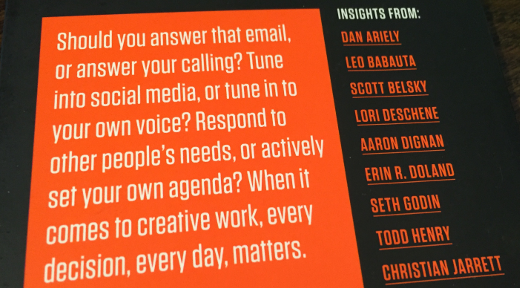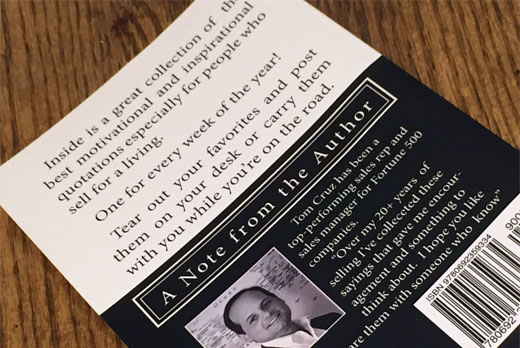Why Chicago Needs Dedicated Festival Grounds

The motto of the city of Chicago, Illinois is “urbs in hortu” which is Latin for “city in a garden.” The motto for Chicago is not “festum in urbs” or “festival in a city,” yet festivals large and small draw people to the city – to visit as well as to live – and contribute tremendously to the unique place it is.
It is the large festival concerts that of course draw the largest crowds, including myself. For me personally, there is nothing else like watching live music with tens of thousands of strangers, to say the least! As great and memorable as these festival concerts are – the likes of Lollapalooza, Pitchfork and Riot Fest – they also have an impact long after the last note is played and people leave, namely in the physical damage done to where the concerts are held, which is in public parks across Chicago.
The damage to parks is eventually fixed, and the cost is mostly covered by the concert promoter. However in 2014, the concert and amusement festival Riot Fest, which called the city’s northwest side park Humboldt Park its home for the past several years, was denied a permit to return there after neighbors complained about damage not completely repaired and other issues related to crowds. The 2015 concert was held on the other side of the city in Douglas Park.
I can understand the issue of park damage. Lollapalooza, the annual concert that consumes Chicago’s Grant Park along Lake Michigan, takes most of the park out of commission – including use for locals – for many weeks to repair the damage, which in their case and for Riot Fest is usually due to rain and millions of footsteps wrecking grassy areas which need to be replanted or resodded. It’s not only an inconvenience, but people are denied access to a park they pay for with their tax dollars.
While existing spaces and places make a great setting for concerts, namely in aerial photos of the crowds, a solution that could make everybody happy – from concertgoers to neighbors – would be a permanent festival location for such events.
Dedicated festival grounds
What you say, Mike, build out an open space for multi-stage concerts or other large festival activities and events? Yes, I am, and allow me to make the case for such a venue.
There’s plenty of space in Chicago. If you’ve ever traveled across this fair city, whether by train, car or even over it by airplane, there is all kinds of “vacant” land across the city. I use “vacant” in quotes as clearly someone owns it. But it is there, and not being used.
This is not an original idea. The concept of space for events is nothing new. The Midwest is dotted with fairgrounds, with indoor and outdoor facilities. Growing up in Massachusetts, the Eastern States Exposition grounds hosted not only the Big E, the annual 6-New England state fair, but events large and small throughout the year. Also, about 90 minutes north of Chicago is the Summerfest grounds along lake Michigan in Milwaukee, Wisconsin, which is designed and used for varying sized events.
Can be designed for its use. By building out a space for such events, it can be designed for multiple stages and the crowds that will stand and watch them and walk around, ideally not on grass but asphalt. Not to mention having some “permanent” fixtures like real bathrooms! Perhaps the event organizers, including Lollapalooza’s Perry Farrell, could have a say in its design too?
Can be designed to scale. Not all concerts and festivals draw the same size crowds, and the venue can be designed and built to accommodate different sized crowds.
Better accommodations for inclement weather. It’s rare than a little rain (or a lot) doesn’t fall on an outdoor festival event. This can be factored into the design of the venue with shelters and indoor facilities.
Better offering of VIP services. In addition to general admission tickets to such events, VIP tickets are more and more commonplace. Designing this into venues can provide a greater experience, at a greater cost, for VIPs, which can contribute more to the cost of the venue itself.
Better transportation planning. Or maybe simply “transportation planning” as such a venue would have planned transportation options – not to mention working in public transportation, paths and parking to accommodate it?
For all of these great reasons, it doesn’t mean that it will just happen. Especially in a city like Chicago, with burgeoning deficits, its politics and everything else making headlines, it could take years for something like this to ever happen. Plus, the city has a long history of hosting great events with little physical traces of them years later, such as 2 World’s Fairs in 1893 and 1933.
But nothing is ever easy, and because of it, it doesn’t mean we shouldn’t think about it. “Make no little plans. They have no magic to stir men's blood and probably will not themselves be realized.” was a quote from Daniel Burnham, the famous Chicago architect and author of the Chicago Plan, a design for the city that was implemented in part, just like there would be some compromise on such a venue.
Could this happen in Chicago? Should it happen? Does the city have more pressing priorities? I welcome your thoughts and opinions on my idea in the comments of this post.
This is from The Hot Iron, a journal on business and technology by Mike Maddaloni.
Did you enjoy this? Subscribe to The Hot Iron by RSS/XML feed or Read by Email.
Build • Business • Strategize • Thrive • (2) Comments • Permalink
My Takeaways From The Book Manage Your Day-To-Day
So, how is your day going?
Whenever asked that question, or just now as you read it, you may have begun it with a sigh or groan, or some insincere sense of enthusiasm. As much as we can plan days and focus on whatever we need to do, there are plenty of factors working against us and disrupting our momentum. These disruptors will never go away, and our only choice is to try to bring elements in to manage or counter them.
When I heard about the book Manage Your Day-To-Day: Build Your Routine, Find Your Focus and Sharpen Your Creative Mind I said to myself, “self, how can I pass on reading this?” The book is a collection of writings and interviews with 20 “creative minds.” Where some I have heard of, like Seth Godin and Tony Schwartz, most of the rest I had not. Yet each of the contributors were very intriguing, yet practical. Manage Your Day-To-Day is a good read that gets you thinking about your own routines and practices and how to get the “most” from them, whatever “most” means to you.
As I read the book, my takeaways from it were not from the specifics of the book, rather from its big picture, and are as follows.
Misery loves company, but only if you want to be miserable together – As I read the dozen pieces from the 20 authors, nobody was saying that they have overcome chaos and their lives are exactly as they want them. Yet they did admit to challenges and offered both general and specific advice on how they are conquering what challenges them.
You deserve a break today – How many times have you been working on something and someone asks you about lunch, and you are thinking, “gee, I just had breakfast!” (Ok, you can put your hands down now.) I have written man times here at The Hot Iron about the creative process – or if you are so inclined, simply thinking – and the need to get away to change the scenery, recharge the brain and come back with a fresh focus.
In my current role, in the employee handbook for my firm it actually mentions taking breaks during the day just for that reason. As a matter of fact, I am writing this very blog post on one of those breaks. And on the way to the Starbucks where I am writing this, I was able to easily think through something for work that my brain kept tripping on. Where I thought I dropped the ball on something, I actually did not, and completely followed through. A nice thought to have in my head as I return to the office.
Where was Scrum? – As I read this book after reading Jeff Sutherland's book on Scrum, using Scrum would be a perfect way to help you manage the creativity. As a matter of fact, I recently setup my own scrum board for myself, with tasks such as writing this blog post and fixing the closet doors in my kid's bedroom.
I recommend Manage Your Day-To-Day for anyone who is looking for ideas and encouragement on improvement of their productivity or just to add some calm into their lives. This book is one I bought myself after reading about it somewhere – sorry, I forgot, as I have had the book for a while. As I always pass along books, for this one I placed it on a shelf in the kitchen of my office with other books people have left there as a mini-library. It will be interesting if anyone takes it, and even more so if they took it after reading this blog post!
Have you read Manage Your Day-To-Day? I welcome your thoughts on the book in the comments of this post.
This is from The Hot Iron, a journal on business and technology by Mike Maddaloni.
Did you enjoy this? Subscribe to The Hot Iron by RSS/XML feed or Read by Email.
Book Take-Aways • Business • Diversions • Strategize • Thrive • (0) Comments • Permalink
Google Contributor Offers Interesting Approach To Blog Revenue
Editor's Note: Google Contributor is no longer operating for general use as indicated below, and this post was edited to remove links to their Web site and embedded elements that are no longer functioning.
Would you pay money to read The Hot Iron? And what if by paying you saw less ads on the site?
I know I have asked this question before when I added CentUp to this very blog. Another new revenue model for writers has come about from Google called Contributor. As I have no illusions (delusions?) of grandeur in earning a living from this very site alone in itself, I was more intrigued to try it to how it really works.
How It Works
Google Contributor allows a Web user to contribute money monthly for ads to not be shown on Web sites it visits. The ads specifically are ones from Google’s own ad services, AdSense and DoubleClick. So if a banner ad comes from another source other than Google (and there are many) that ad will still appear. In the place of the ad it may be blank or a thank you message for supporting the particular Web site.
From the Web site owner’s perspective, if they are displaying on their site through Google, rather than getting the money for someone seeing and clicking on an ad, they are getting money from the user’s Contributor account, in a sense offsetting the cost of the ad usually paid by the advertiser.
A few items of note on Contributor. Currently it only works in the US. By someone contributing money, either US$2, US$5 or US$10 a month, they are still going to see ads. As shown in the chart below, by contributing those 3 previously mentioned dollar figures, they will see respectively 5-15%, 15-25% or 25-50% fewer ads. These fewer ads are across all Web sites with Google ads not just one in particular. So if you contribute $10 a month, thinking it will all go to me for reading The Hot Iron, it will not.
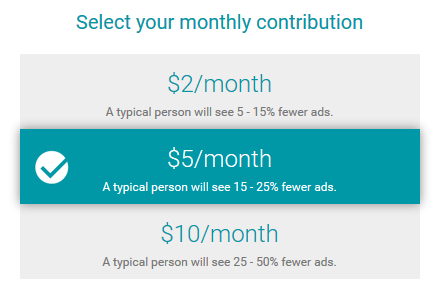
Is It Worth It?
That’s a great question – is it worth it? I honestly don’t know, as I have just set it up on the blog, and I have also signed up as a Contributor at the whopping US$2 a month level.
Here is a screenshot of this blog with an ad appearing at the top:
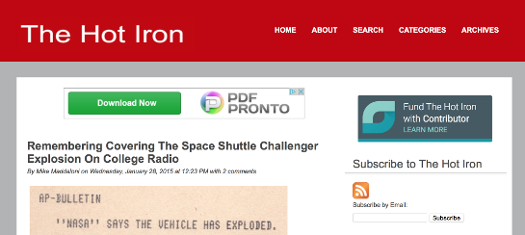
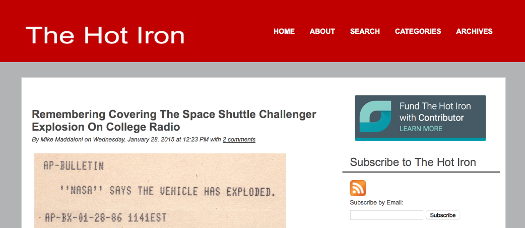
I know – the difference is amazing!
It will be interesting to see how often I notice the ads not there. Last year was the 20th anniversary of the Web banner ad. As I heard somewhere – and I forgot the source – it was marking 20 years of people ignoring banner ads! So even if it technically works, it will be interesting to see if anyone notices.
Are you a Google Contributor? Did I convince you to join, or not join? I welcome your thoughts in the comments of this post.
This is from The Hot Iron, a journal on business and technology by Mike Maddaloni.
Did you enjoy this? Subscribe to The Hot Iron by RSS/XML feed or Read by Email.
Blogging • Business • Technology • Web Design • Web Development • (2) Comments • Permalink
My Takeaways From The Book 52 Motivational Quotations For Salespeople By Tom Cruz
We all sell. Whether the word “sales” is in our job title or not, we all “sell” in some regards. From persuading a solution at work to convincing someone to date us to everything in between and all around, there is some element of selling in our lives.
Where we can succeed in selling, many times we do not. And when we do not, we can react to it in any number of ways. Whether we like it or not, we have to try to sell again. For some, getting back into the proverbial saddle is easy, and for others or just other times, we may need help. One way to get that help is from words of encouragement.
My good friend Tom Cruz has had the word “sales” on his business cards over his entire career (and when I say good friend, I stood up in his wedding and once flew live lobsters out to his house in LA from Boston, but I digress). When I heard he wrote a book titled 52 Motivational Quotations for Salespeople, I knew I had to read it. Of course it is always to support a friend, bit I knew it would be a great collection and motivator as well.
Friend bias aside, I enjoyed this short book. Each quote is on a separate page, allowing you to tear them out and hang them up. As with any book, I had a few takeaways from it:
We need to find what works for us – Reading through a book of motivational quotes in itself won’t necessarily make it a better day. Or maybe it will. We have to find what works for us, though trial and error, and it may be a third-party sharing something with you.
Explore beyond words – We often hear names of people and quotes that have been attributed to them. But who are these people? Were they business or religious leaders? Were they ax murderers or musicians? Does the quote define them or just confuse you? As I went thru this book I ended up searching several names I did not know.
Write your story – Where these quotes are just that, individual sets of words from others, combined they are part of my friend Tom Cruz’s life journey, and thus tell part of his story. We all have a story to tell or at least record for curious others – now or in the future – whether our child or a stranger. No matter who, our story may be of interest to someone someday.
Note Tom did not ask me to write this, nor did he give me a copy of it. I will make sure to give him a signed copy of my future book someday! As I pass along book I read to others, I am sending this one to a common friend of both of ours, who also works in sales, and should publish his own book too.
Were you intrigued or inspired to get 52 Motivational Quotations for Salespeople? Have you thought of publishing your own quotes? I welcome your thoughts in the comments to this post.
This is from The Hot Iron, a journal on business and technology by Mike Maddaloni.
Did you enjoy this? Subscribe to The Hot Iron by RSS/XML feed or Read by Email.
Book Take-Aways • Business • Thrive • (0) Comments • Permalink
Most People Spend Most Of Their Time Around Their Job

It came to me a while back, something I guess I always knew subconsciously but only then came to the forefront of my mind – most people spend most of their time around their job. I then decided to put fingers to technology to see if I was right, and here’s my analysis and further thoughts on it.
Jobs and all their trappings
When thinking about how we spend our time, our jobs tend to be at the top of our list. This is of course assuming we don’t sleep most of our lives, but I digress. The job itself is the major time hoarder, assuming the typical 8-hour day. But if your day is anything but typical, it in itself is probably more than 8 hours, give or take a few minutes to a few hours.
As the TV infomercials say, “But wait, there’s more!” There’s the commute to work, both to and from it. You then need to prepare to go to work – wake up, shower (hopefully), eat and of course thinking about work. After work, there is probably some decompression, which involves more thought. If you work for the bare-minimum tech-savvy company, you can probably check your work email on your mobile device, and that adds up quickly, whether it is during the day or off-hours, including weekend. Then there's time devoted to things like doctor's appointments if things aren't so great on the job, but I don't have to go down that path here, do I?
Speaking of those off-hours and weekends, you are also thinking about work in addition to being connected to it. You may also be shopping for work, whether it is clothes, food or other supplies to get you through the day. And let’s face it, you may even take time after (or before) hours and on the weekends to actually do work, taking those time-consuming thoughts into even more time consuming actions.
So what’s your point Mike?
Now that I have set a somewhat somber point, you may be asking why? Why even bring this up?
Where I have thought about this very topic for a while, I wanted to write it out to make it real, tangible, and in my own face, and as a result in yours as well. By doing so, it is a realization that this will play into my upcoming goals for the new year. Where this time allotment towards my job may not be a direct or the primary input to my goals and decisions, but acknowledging it, I am realizing it will have some impact on it. From what I buy to where I live to what I do outside of work to whatever I may not have even thought of, the amount of time that my job currently occupies my time will come into consideration.
This time consumption perhaps consumes you as well – hopefully less, but perhaps even more. And let’s face it, it consumes most everyone. I say most everyone as I realize there are those who may not have to or want to work as much, and have the ability to disconnect from it. It may be because they are wealthy, live a simpler life, have a business or job that does not require as much of their time, work part-time but make enough to make them happy, or something else I couldn’t possibly fathom, but would love to.
Even if your job takes up most of your time, that may be ok, providing you love it, or maybe just a strong like. Or it’s convenient to where you live so your commute time is shorter. Or whatever it is or are, when you look at it written out, I hope you are at a minimum content with it.
The lay of the land
Now that I have painted the picture, do I (or you) want to hang it on the wall, or change it? I am not trying to draw any conclusions here – just simply putting it out as I said earlier, but reserving the right to refer to this in future writings.
I welcome your thoughts on this in the comments to this post… and please leave out any specifics about your job in those comments!
This is from The Hot Iron, a journal on business and technology by Mike Maddaloni.
Did you enjoy this? Subscribe to The Hot Iron by RSS/XML feed or Read by Email.
Blogging • Business • Diversions • Strategize • Thrive • (0) Comments • Permalink



